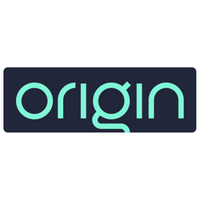Data-led recognition: how to align global structure with local values
Recognition and fringe benefits are critical to building engaged, inclusive workplaces. When done well, they strengthen culture, reinforce values and make people feel seen.
But for global organisations, designing a programme that feels both consistent and culturally relevant is no easy task.
It’s clear that data is the key to getting this balance right.
With the right insights, employers can offer consistent recognition across borders without losing sight of local customs, regulations, preferences or expectations.
Seeing the full picture
One of the biggest challenges when it comes to any global programme is fragmentation.
Different regions may use different tools, offer different benefits, have different reward structures or processes, making it difficult to compare or optimise efforts at scale.
Without a single source of truth, recognition risks becoming inconsistent or misaligned with global values.
Global HR teams need to be utilising technology to allow them to bring all programme data together into one place.
With the right technology, HR teams have clear visibility into where and how recognition is being given, across countries, functions and employee groups.
With this clarity, organisations can identify gaps, avoid duplication and create policies that reflect the reality on the ground.
Understanding cultural resonance through sentiment
Not all recognition lands equally. In some cases, even well-intentioned messages can feel impersonal or out of touch.
Technology can help identify when and where this happens, and where it’s missing completely in your reward schemes.
If data shows consistently low engagement or neutral feedback in certain regions, this may signal a need to adjust communication style, reward type or benefit offered.
These insights allow organisations to course-correct in real time, making sure recognition efforts feel meaningful everywhere and the recognition spend is not being wasted.
Aligning spend with local impact
Recognition budgets often face scrutiny, especially in leaner times.
But cutting spend without insight can backfire, either by undermining impact or reinforcing inequality across regions.
By tracking programme spend across markets, employers can see where budgets are being under- or overutilised.
A platform like Origin can help benefit leaders ensure that recognition feels equally valuable, even when currency, costs or cultural expectations differ.
With these insights, companies can optimise budgets without compromising on fairness or experience.
Reinforcing values through data
Recognition is not just about saying thank you. At its best, it reinforces the behaviours and values a business wants to see more of. But do recognition programmes always reflect this?
By analysing which values are most often cited in recognition — and which are underrepresented — HR leaders can spot misalignments and adjust communication, training or incentives accordingly.
This ensures that recognition remains a strategic tool, not just a transactional gesture.
Conclusion: structure and sensitivity can co-exist
Building a recognition programme that works globally does not mean sacrificing local identity.
With the right data, employers can create frameworks that are both structured and flexible — delivering consistency where it counts, and adaptability where it matters.
Supplied by REBA Associate Member, Origin
Origin is the world’s first Global Benefits Intelligence platform.








